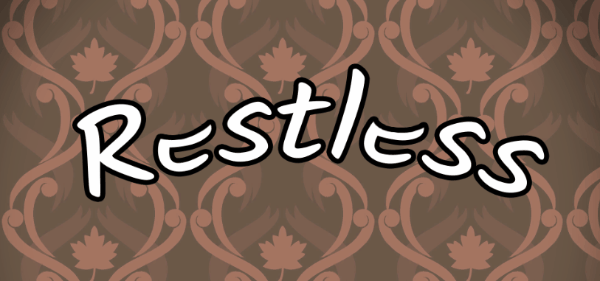A new User Interface, with its own layout and art, can help attract players and convey information and character in a way that’s unique to your game. I want to talk about our experience with Restless – a small(ish) game where you haunt a house and try to make peace with its inhabitants. I hope this post can be a useful tool for others looking to make their own UI, especially in text-heavy games, or those where the bulk of the game is in its interface.
Tag Conversation
It’s been a couple of years since we first released Dialogue: A Writer’s Story, and I wanted to take this opportunity to view it with a lens we don’t usually use. Minor spoilers for the game ahead, so feel free to go play it right now =)
When talking about the game, we often highlight how it is an everyday sort of story. It is about exploring Lucille’s life as a writer and her relationships with others. The stakes are low and your choices do not create wide sweeping changes. All of this is true, but there is also something else, something complementary, beneath all that. Dialogue determinedly avoids clean conflict resolution, and this can feel ‘off’ to a lot of people.
You may have heard, Dialogue on Steam is only a week away (Sept 20th)! We’re using it as an excuse to talk about the mechanics of the game in more depth than we have in the past, and this is the second part of that discussion: Active Conversations. The first part (about Exploratory Conversations) can be found here.
Hey everyone! We’re excited to finally be counting down to the Steam release of Dialogue: A Writer’s Story – Sept 20th is less than two weeks away! To celebrate, we’re doing a couple of blogs to talk you through the two main conversation types of Dialogue and the mechanics therein. In case you don’t already know, Dialogue is a game about conversation which sets you in the everyday life of a writer, Lucille. Different types of conversations have different mechanics to better reflect their nature (if you want to read a bit more about Dialogue in general, you can find out more here). Today, we’re kicking off with Exploration Conversations.
Here at Tea-Powered Games we talk about dialogue quite often, but what is it that good dialogue could add to your game?
In the case where you use dialogue to add new kinds of play to your game, it gives players a change of pace, a new mechanic to play with, or different kinds of goals. If you tie dialogue to your game’s current mechanics, fans of those mechanics will get to interact with them more, and experience more interesting variations. More importantly, entirely new stories and games become possible when you start thinking about conversation as a part of the game rather than just more words on screen.
It sounds great, doesn’t it? Unfortunately, figuring out what kind of dialogue your game needs is not very straightforward.
Firstly, a bit of news: We’ve re-launched Dialogue on Steam Greenlight. We’ve had a positive response to the game from many people, but we thought we could do a better job of giving this unique take on conversations its best chance. After pulling together feedback from a variety of sources, we’re happy to present a new version of Dialogue, with a complete visual overhaul of the user interface.
In response to our Accessibility post, we received a comment about the lack of failure in Dialogue, and how that affected the game. This is something we thought about while designing Dialogue, and it seemed important enough to share these thoughts. The comment is found in the Accessibility post, but here is the part we’re responding to.
One of our goals as Tea-Powered Games has always been to make our games accessible to as many people as possible. There are many different things to consider, but we tried to ask ourselves at every junction what we could do to make our game easier to play. We’d like to share some of the decisions we think helped Dialogue’s accessibility, and (because we can always do better) some which we wished we could have made work.
In this week’s post we want to talk a bit about the process of making our game, focusing on an individual scene. Hopefully this will give you a bit of insight into the kind of process that lead to Dialogue being the game it is.
We have to start somewhere, so we’ll go from the scene outline. This is just a few sentences on what the scene itself is about and which characters are in it. It’s already been placed within the story as a whole, so you can see the conversations that happen before and after it, as well as its own relevance to the plot as a whole.
- 1
- 2
